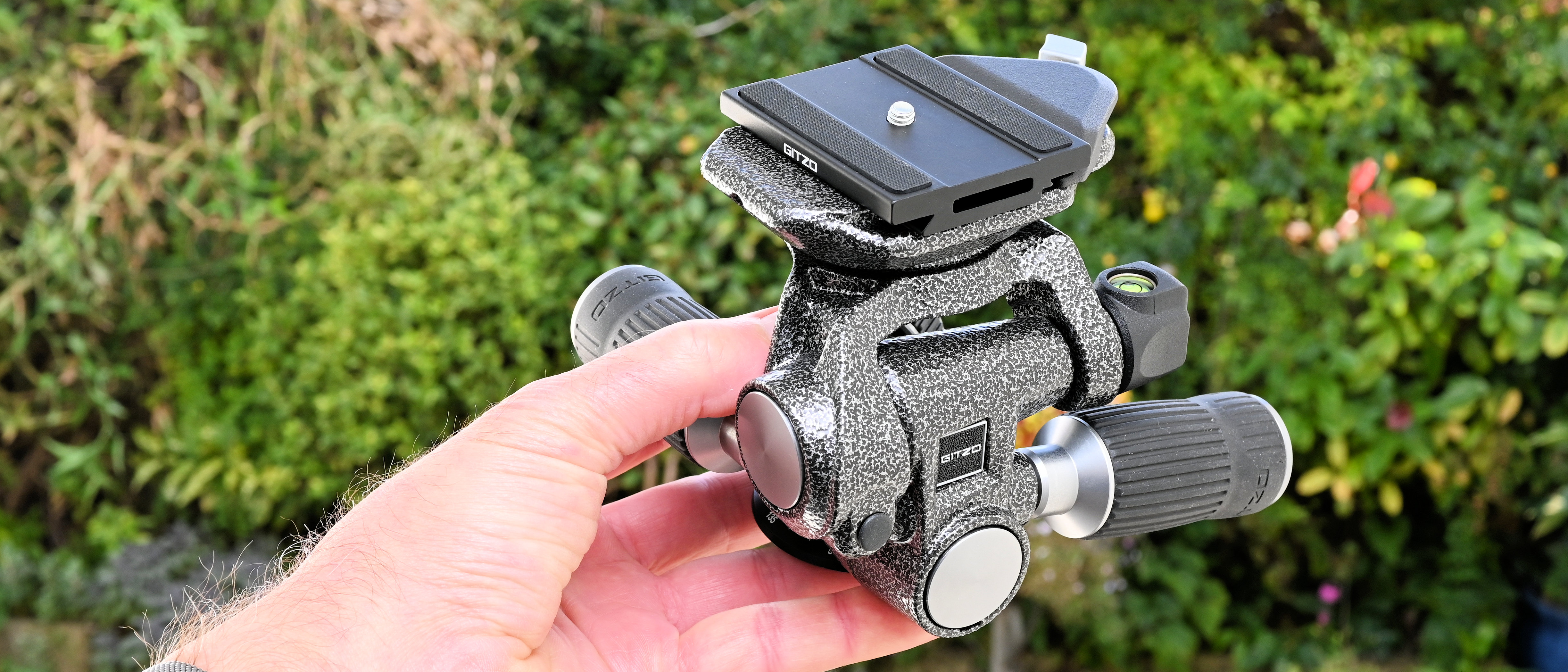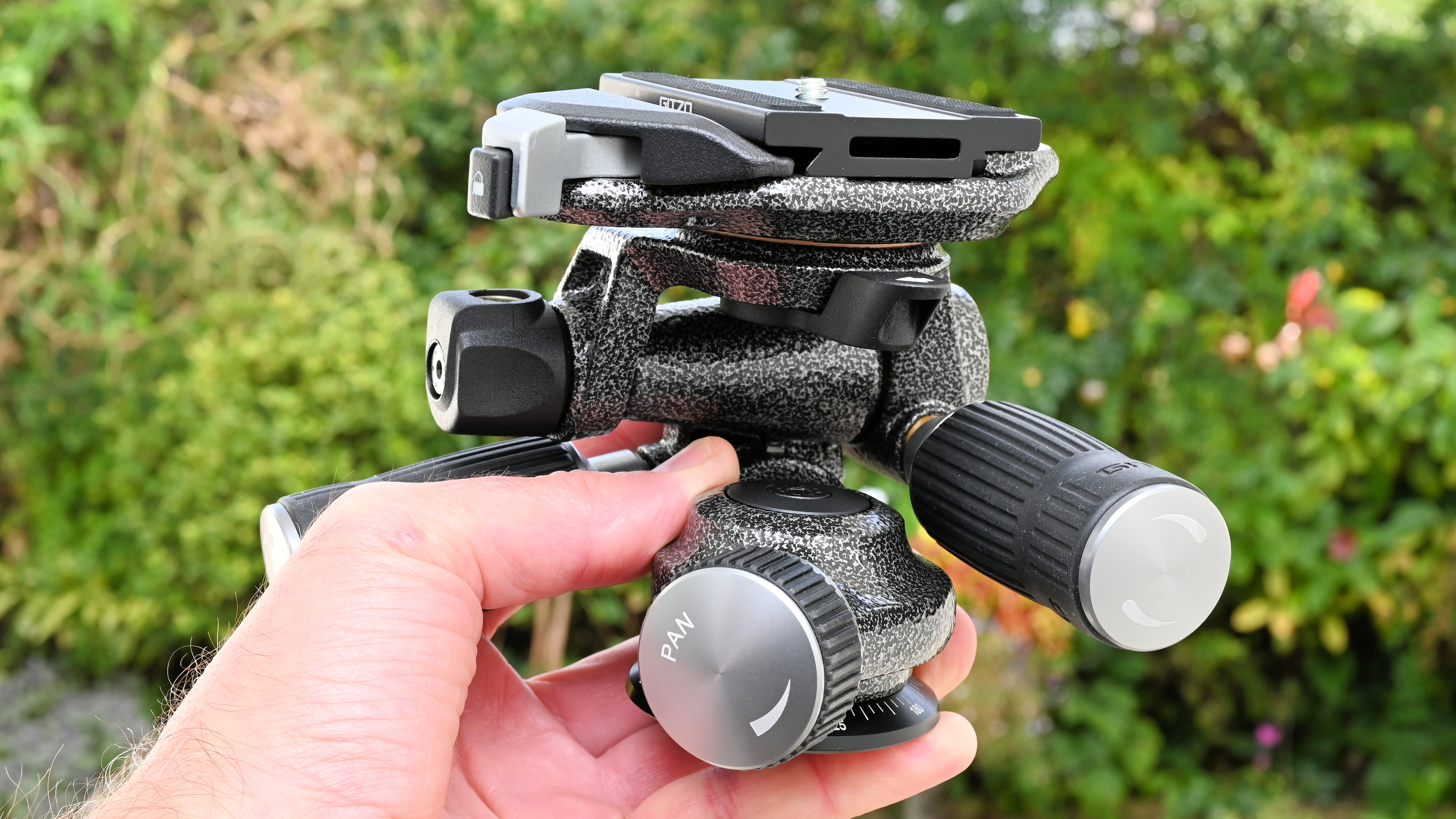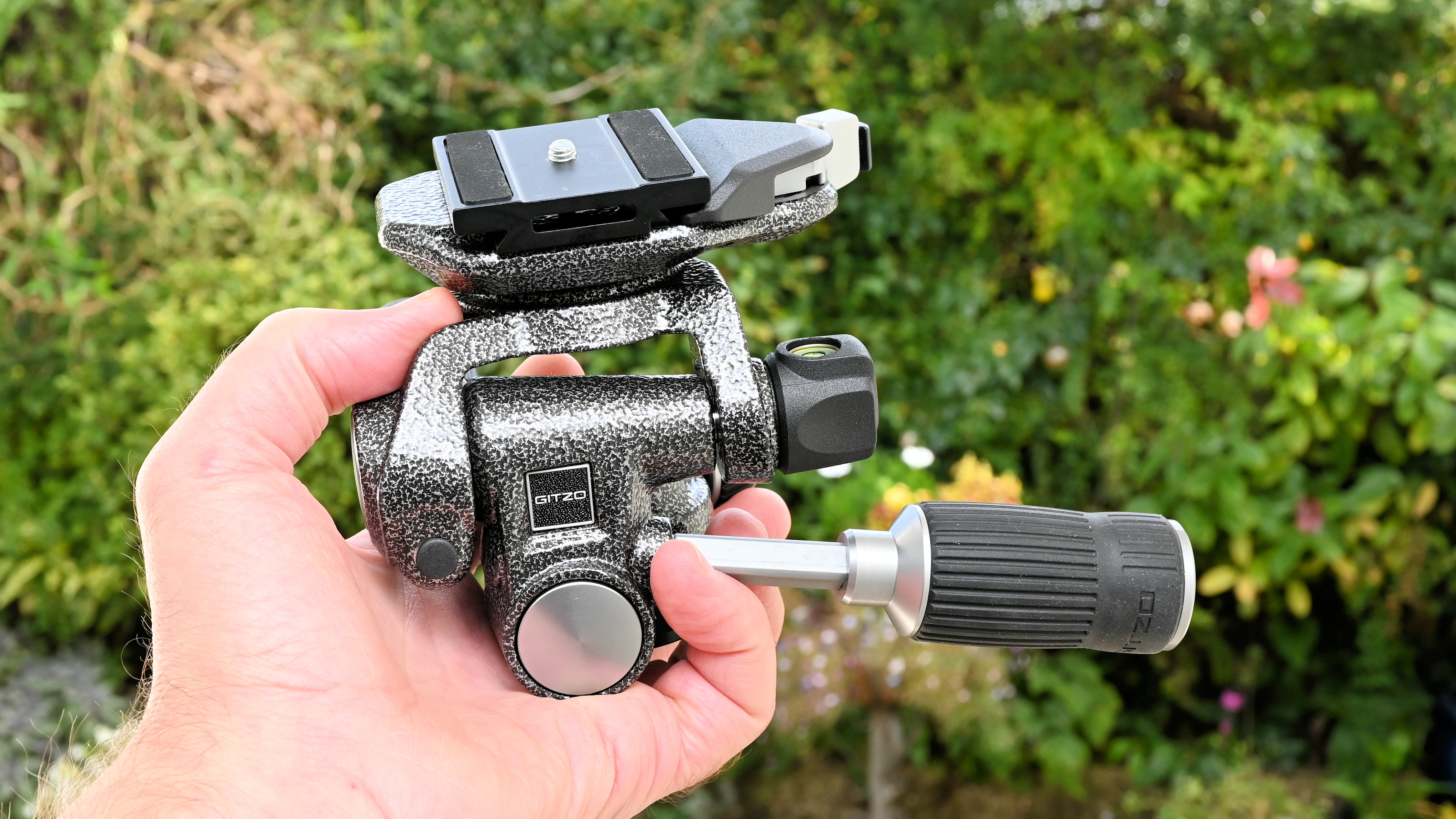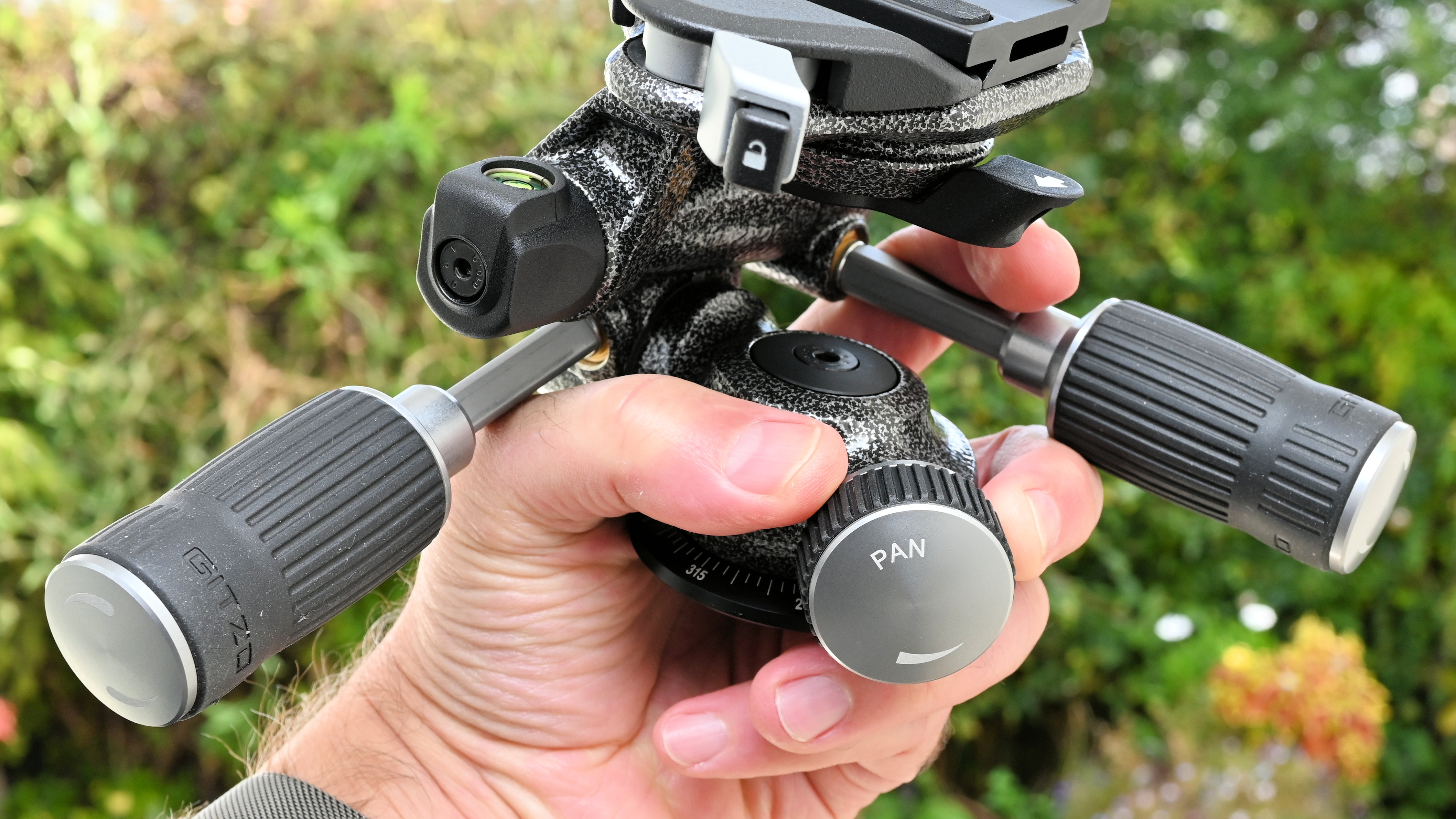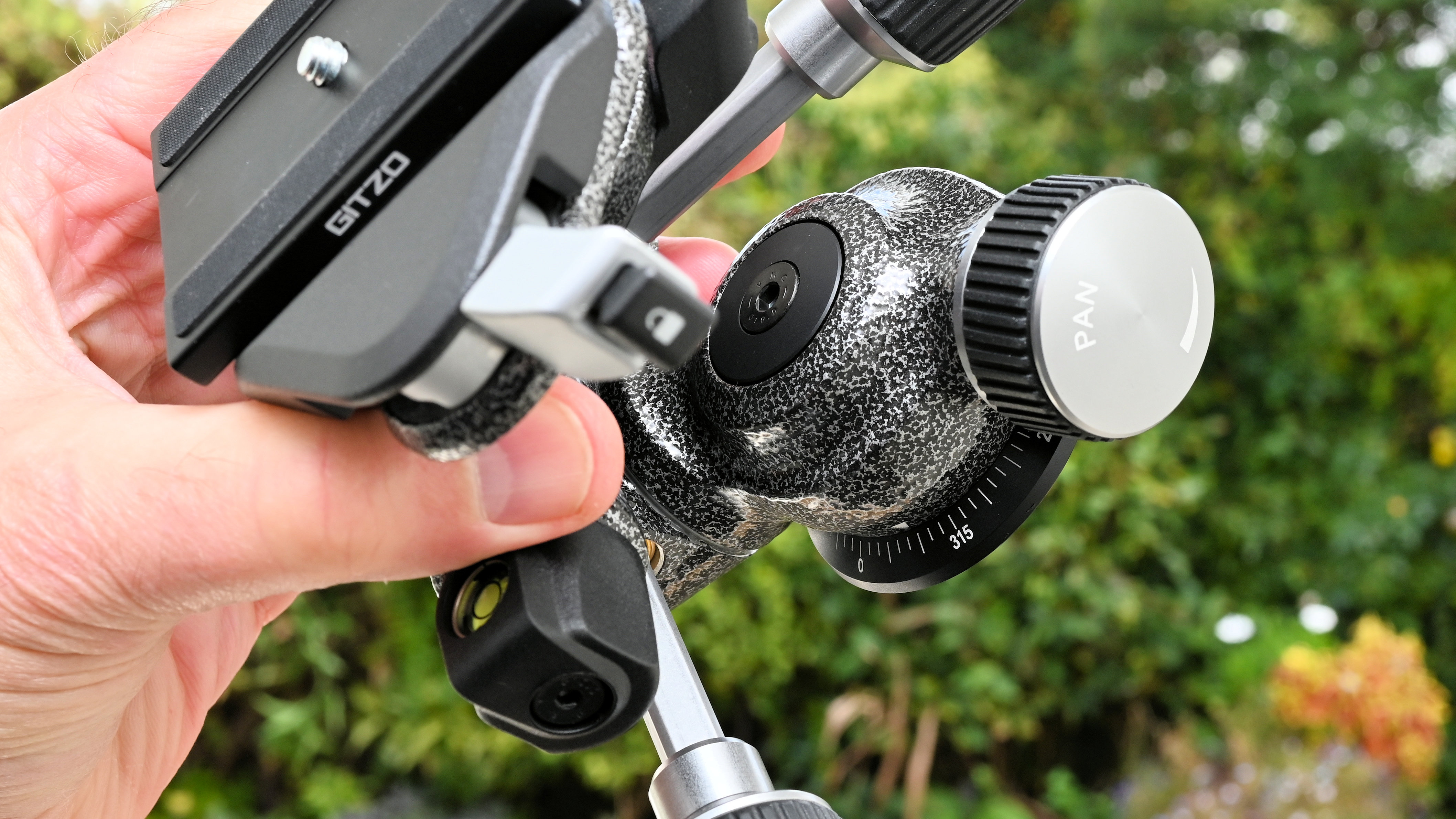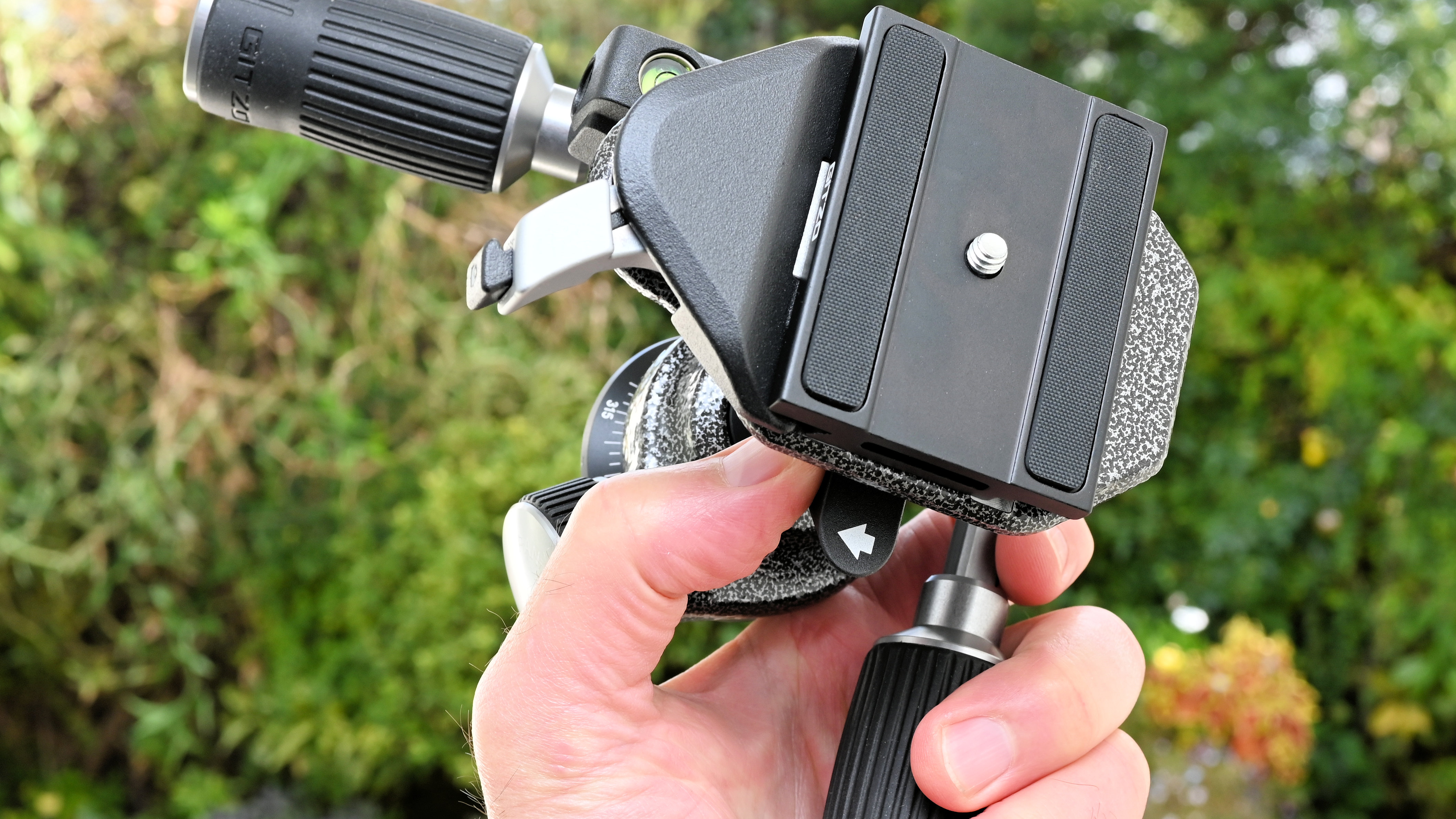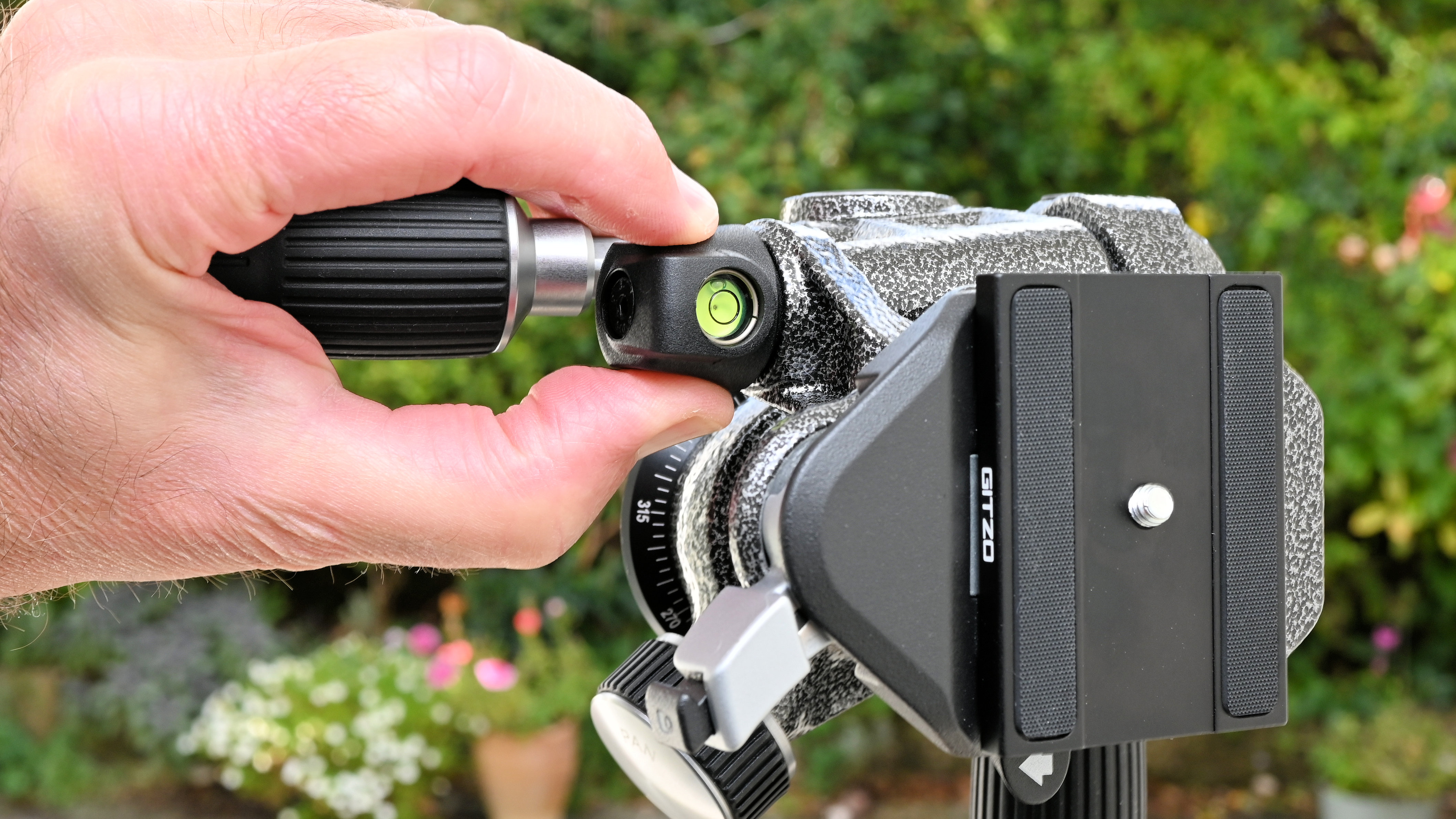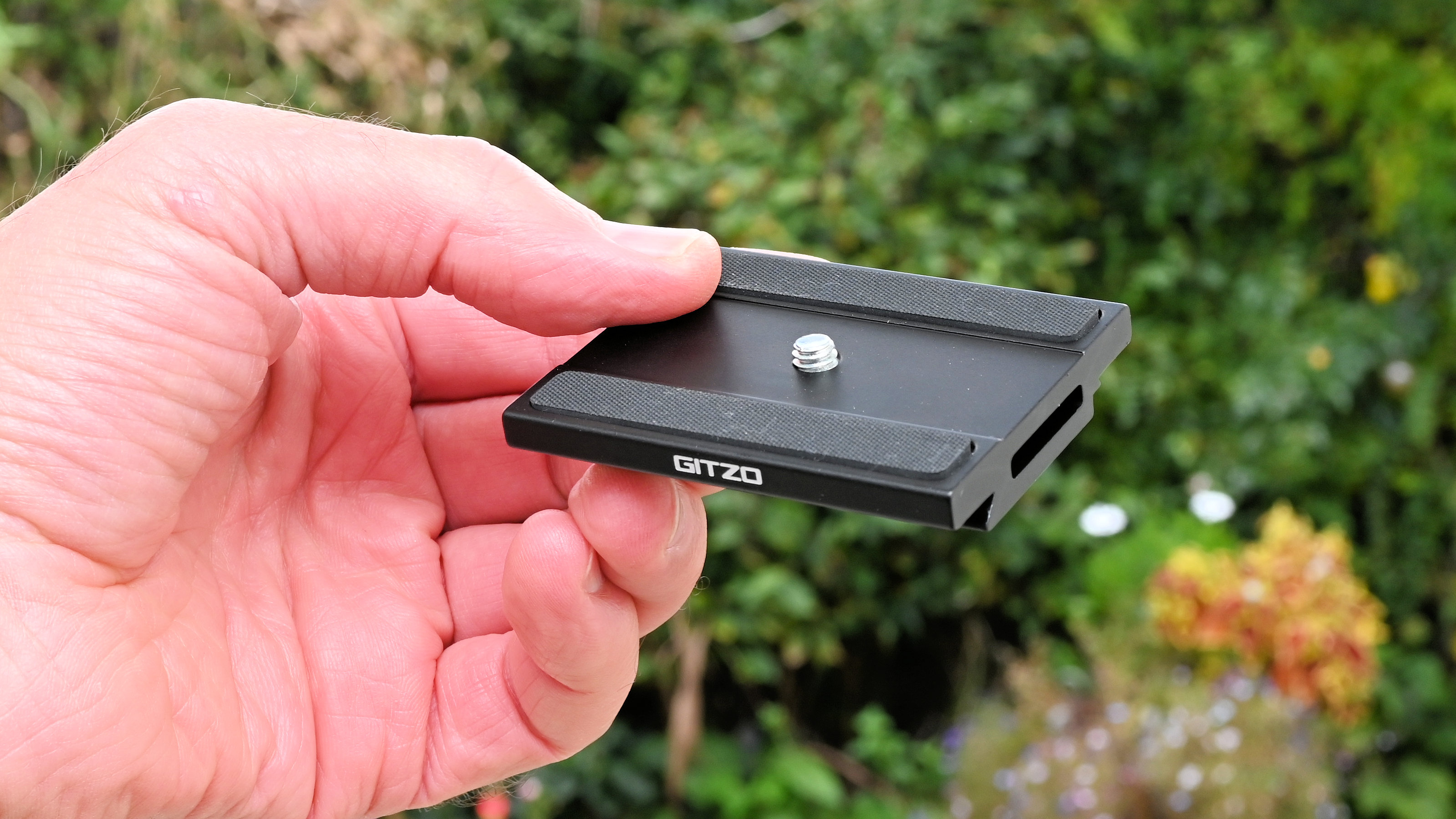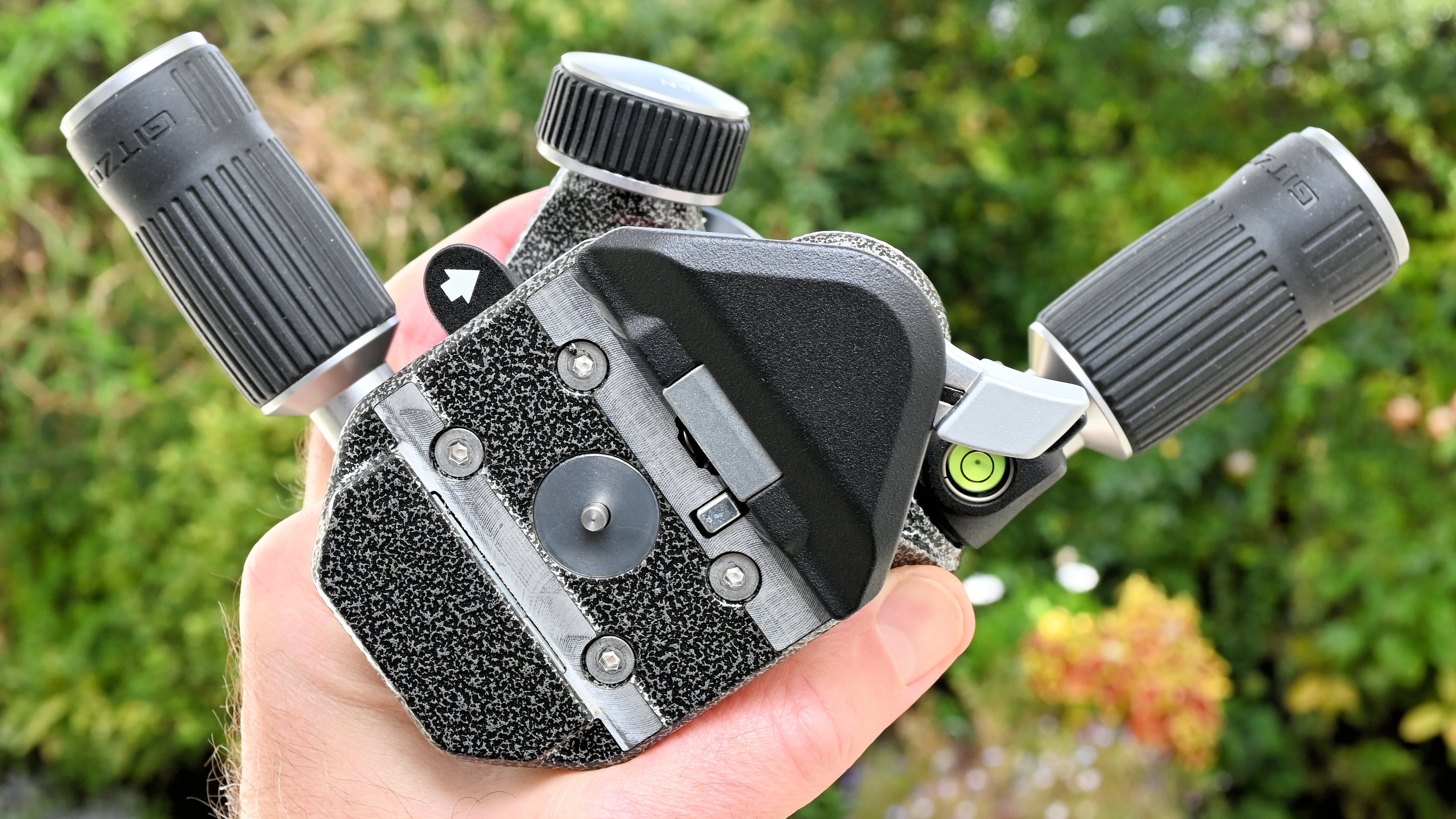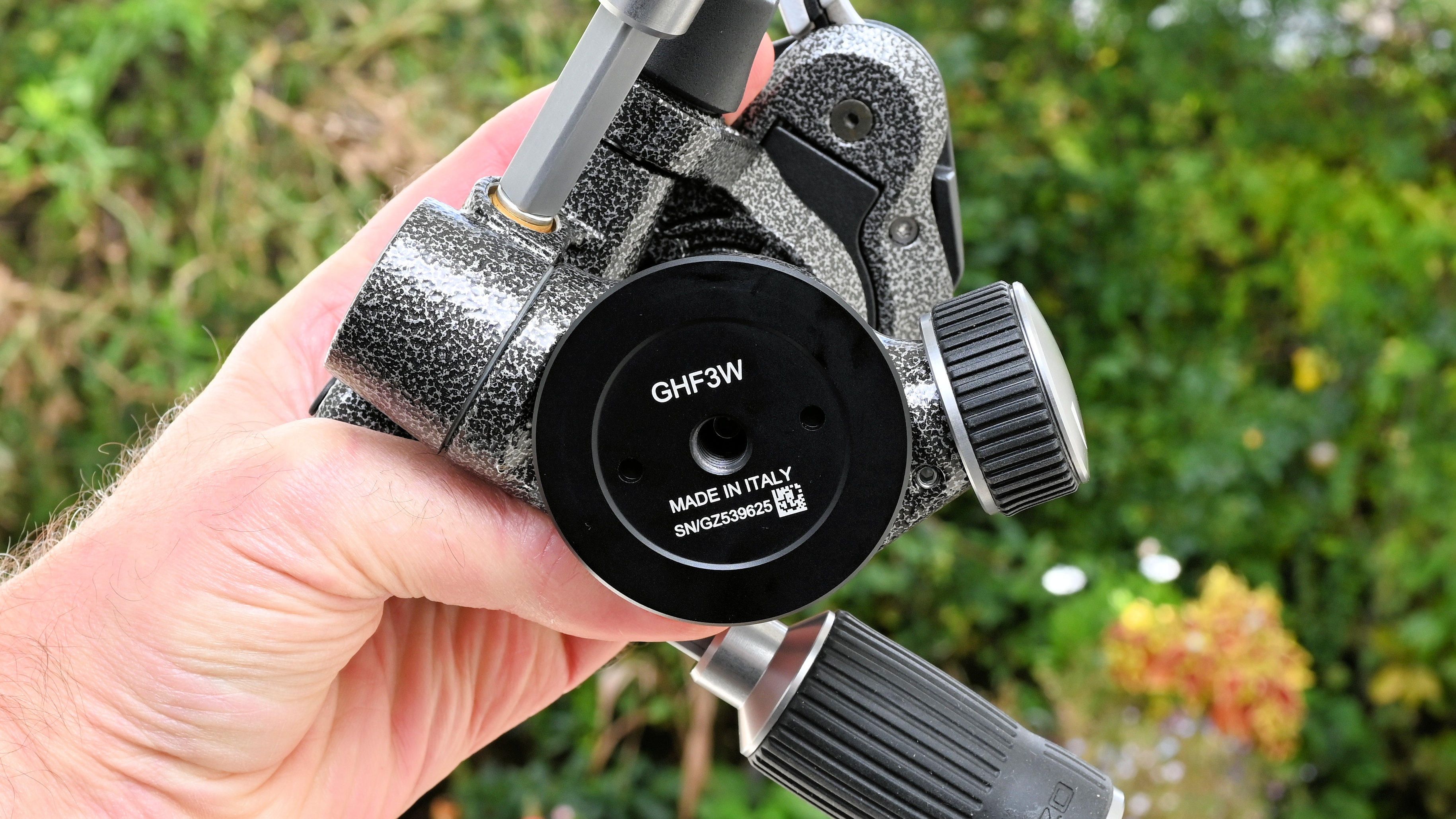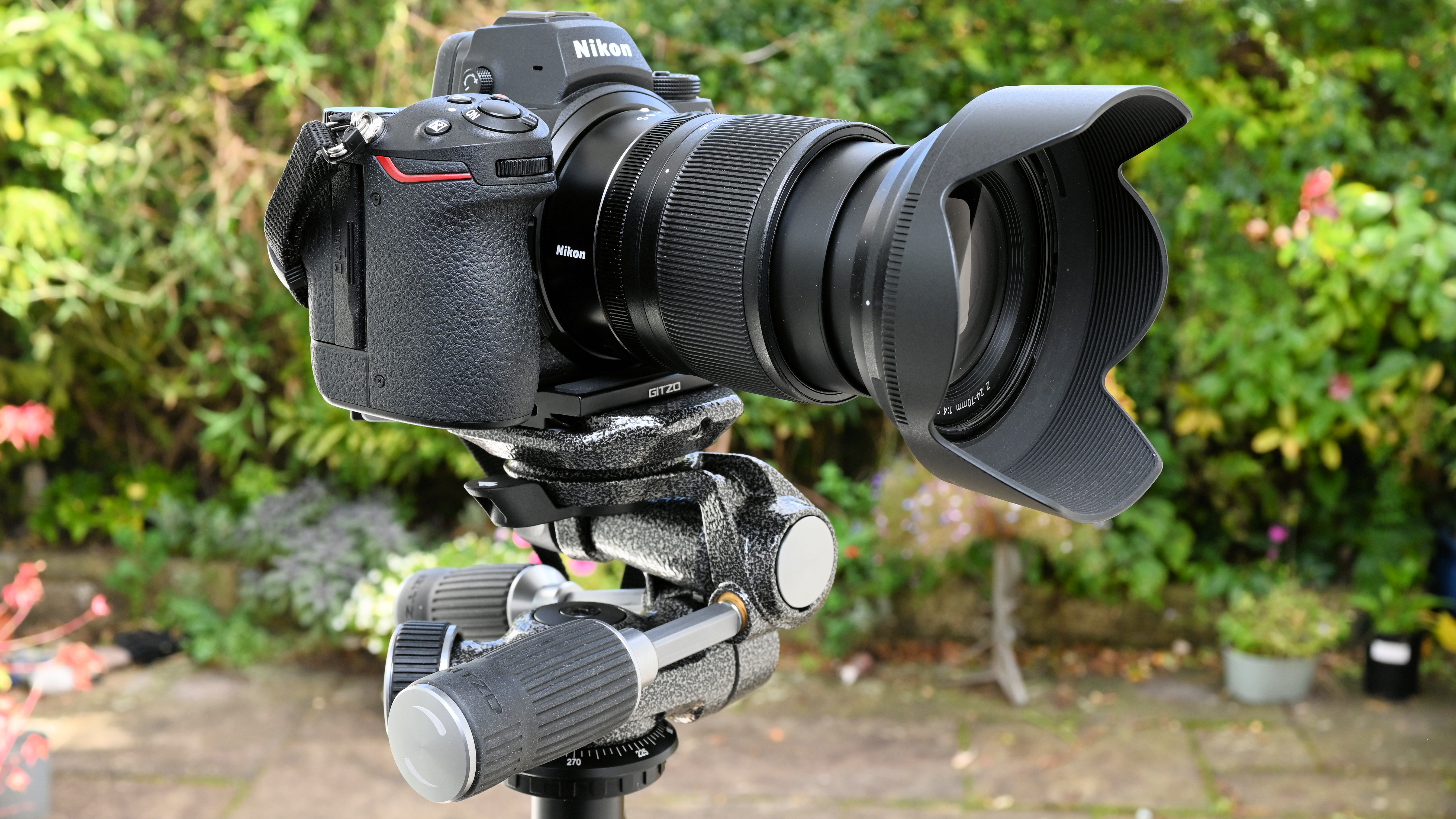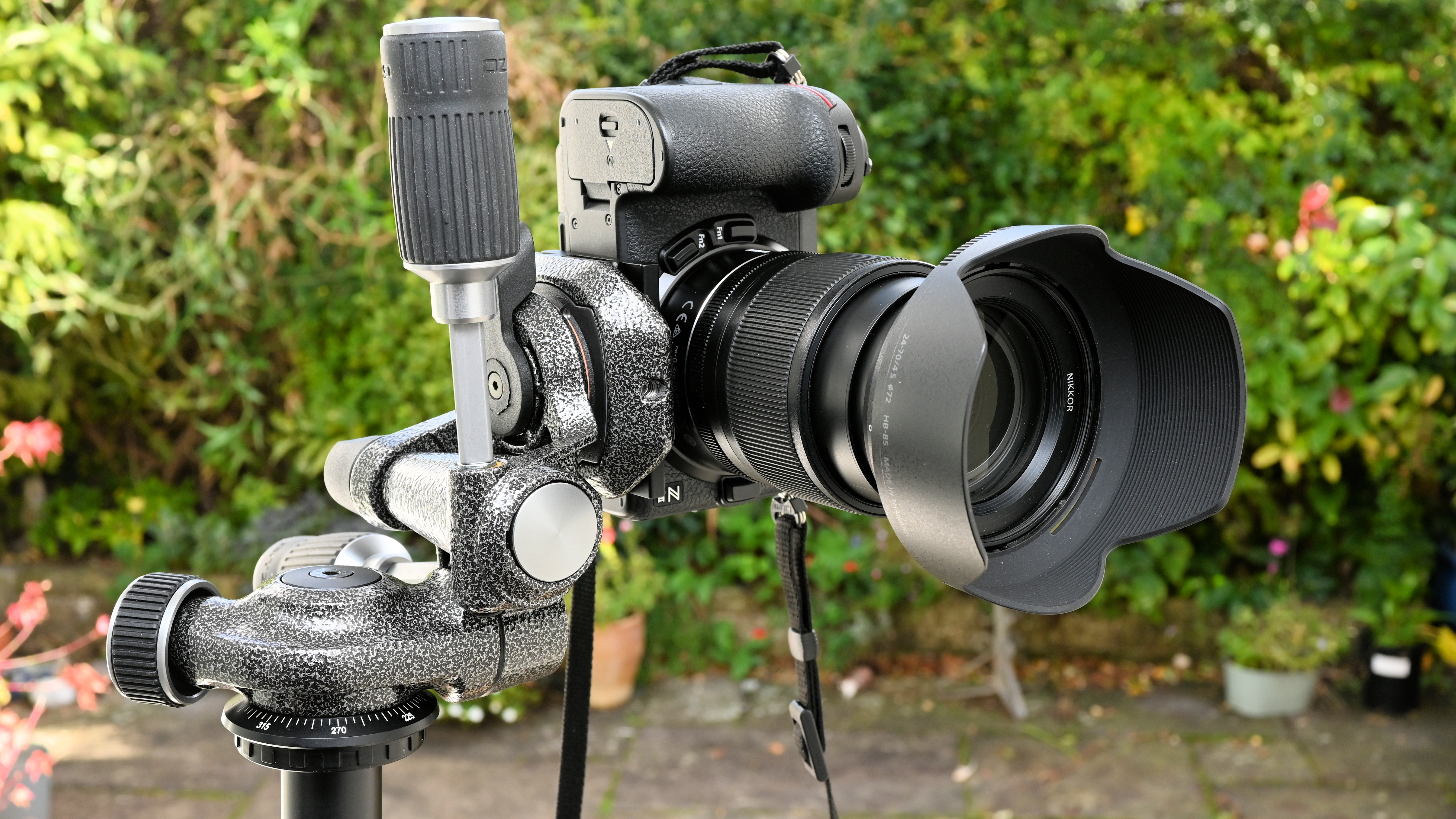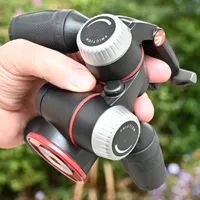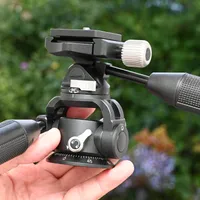Digital Camera World Verdict
The Gitzo GHF3W 3-Way Fluid Head won me over at first glance. It looks an absolutely top-class piece of kit and to be honest, I’d expect nothing less from Gitzo. It’s always been a premium brand. But while this head looks pretty amazing, its performance is even better and it’s an absolute joy to use. The only catch is that typical of Gitzo, it’s eye-wateringly expensive to buy.
Pros
- +
Luxury magnesium build quality
- +
Independent fluid cartridges
- +
13kg / 28.7lb payload rating
- +
Retractable handles
Cons
- -
Hugely expensive
Why you can trust Digital Camera World
If I had to name an equivalent to the ‘Rolls Royce’ motoring brand in the field of tripod design and manufacturer, it would be Gitzo. To me they’ve always created tripods and accessories of absolutely the finest quality, at the most premium prices. The company itself has French origins dating back to 1917, concentrating on tripods and supports from the 1950s onwards. A key facet of Gitzo design is the pioneering use of carbon fiber and magnesium alloy to create super-sturdy yet relatively lightweight tripods. It’s perhaps not surprising that Gitzo became part of what is now the Videndum Group in 1992, a company that also features Manfrotto in its portfolio.
The Gitzo GHF3W 3-Way Fluid Head is a typically luxurious product, designed to be a perfect match for Gitzo Series 2 and larger Mountaineer and Systematic ranges of tripods. However, it has pretty much universal appeal for anyone who wants one of the best 3-way heads for any make and model of tripods for photographers.
Gitzo GHF3W 3-Way Fluid Head: Specifications
Material | Magnesium alloy |
Max load | 13kg / 28.7lb |
Weight | 0.96kg / 2.1lb |
Height | 11.5cm / 4.53" |
Base diameter | 60mm / 2.36” |
QR plate | GS5370DR |
Gitzo GHF3W 3-Way Fluid Head: Price
Ouch! This tripod head costs $690 / £487 / AU$1,330, although you can often find it quite heavily discounted if you shop around. Even so, the perfectly respectable Manfrotto X-PRO 3-way head only costs around a quarter of the price, at $220 / £129 / AU$289. Some say you pay through the nose for the Gitzo badge and that the brand is very overpriced.
On the other hand, I’ve met a couple of pro photographers who bought Gitzo tripod kits decades ago and are still using them after many years of daily grind in the most demanding conditions, without even a sniff of a problem. One of them said to me he was confident that his Gitzo would be the only tripod he’d ever need to buy. Maybe this head is actually very good value, if you can afford to take the long view.
Gitzo GHF3W 3-Way Fluid Head: Design & Handling
Gitzo products are undeniably stylish, but I’ve never felt they were a case of style of substance. The Gitzo GHF3W 3-Way Fluid Head is definitely substantial, with a payload rating of 13kg / 28.7lb. That’s a lot more than the rating of many a set of tripod legs and certainly more weight than I’d ever need to throw at it. Even so, the head itself is surprisingly lightweight at just 0.96kg / 2.1lb, thanks to clever design and the use of magnesium alloy as the main construction material.
Sometimes I feel that 3-way heads are substantial in a bad way. Compared with relatively streamlined ball heads, they often have long operating handles that stick out and enlarge the stowage size, as well as having a knack of catching on things as you’re walking around. By contrast, the Gitzo is remarkably compact for such a heavy-duty 3-way head, its packing size being diminished by retractable operating handles for tilt and swivel. It’s certainly not unique in this respect, but the mechanisms are engineered very well with sturdy square shafts.
While the handles slide smoothly on their shafts, movement is even more silky when it comes to adjusting the head. This is thanks again to high-quality manufacturing, but also due to the fact that independent fluid cartridges are fitted for each axis. These give a suitably fluid feel to movement. The two retracting handles for tilt and swivel are supplemented by a fixed knob for panning lock/release. As with the other two handles, the panning knob has a graphic that indicates variable friction damping is available – the more you turn the knob, the freer and easier panning becomes.
The best camera deals, reviews, product advice, and unmissable photography news, direct to your inbox!
At the base of the head is a clearly marked panning scale. It’s marked in 15-degree intervals with long lines, and at smaller 5-degree increments with shorter lines. Numbered values are shown at 45-degree intervals, so everything is nicely covered off. I find the calibrated scale especially useful when shooting a sequence of panned shots that I intend to stitch into a panorama at the editing stage.
There’s a generous range of tilt and swivel available on both axes, with -70 to +90 degrees front tilt and -30 to +90 degrees laterally, but the Gitzo has another trick up its sleeve. Just below the camera platform there’s a black lever with an arrow printed on it. Move the lever in the direction of the arrow (how can you resist?) and you’re able to rotate the camera platform through 90 degrees. This enables you to quickly and easily swap the axes for tilt and swivel.
Another bit of trickery is designed into the bubble level. Instead of being fixed, the large and easy-to-view bubble level is mounted on a 90-degree rotating base. The idea (and I think it’s a good one) is that you can simply twist the bubble level housing so that the same level works in either landscape- or portrait-orientation shooting.
The quick-release plate locking mechanism is safe and secure, with a pushbutton lock-release feature. It works a treat and while the official Gitzo quick-release plate has a product code of GS5370DR, you can use any Arca-Swiss plate. That’s especially handy if you’re using big, heavyweight lenses to take advantage of that generous payload rating, as many of these now feature tripod mounting rings that have integral Arca-Type feet, so you can plug them directly into the platform on the head.
The camera platform itself is beautifully engineered and impeccably finished, fully in keeping with the rest of the head, as shown below.
Down below, the mounting plate for attaching the head to a tripod has a smart black anodized finish. It’s the same plate that has the panning scale marked on its upper surface. The circular plate has a diameter of 60mm / 2.36”. This makes it an ideal fit for Gitzo’s heavy-duty tripods with similar payload ratings, as well as the vast majority of heavyweight tripods from other manufacturers.
Gitzo GHF3W 3-Way Fluid Head: Performance
I have to admit to finding ball heads something of a revelation, a few decades ago. After many years of using 3-way heads, I was really taken with the speed and ease of setting up a ball head. The Manfrotto XPRO Ball Head is one of my favorites. More recently, I’ve rather come full circle, and I’m not just talking about the merits of a 360-degree panning facility. I’m happy to take a little longer setting up a shot, and generally prefer the greater attention to detail that a 3-way head can give me, with its independent locks for tilt, swivel, and panning.
I should also confess that I don’t have the patience of a saint and don’t want to waste time fiddling around for ages when setting up a tripod head. I found that the Gitzo gave me the best of both worlds. It enabled ultra-precise adjustments in any and all directions, while also being quick, easy, and painless to use. Better still, the lock/release handles work with such a sublime feel, partly thanks to their independent fluid cartridges, that I got a genuine feel-good factor from using the head.
And when it comes to the crunch, I found that I could load up the head with hefty camera and lens combinations, and it gave me rock-solid support with no unwanted flexing, sagging, or vibrations. I also really like the 90-degree rotational mechanism for quickly and easily swapping the tilt and swivel axes around, as well as the bubble level that works so well in both landscape and portrait orientations.
Gitzo GHF3W 3-Way Fluid Head: Verdict
I think that the Gitzo GHF3W 3-Way Fluid Head really looks and feels the business. Designed and manufactured in Italy to the highest standards, it’s the tripod head equivalent of jumping into an exotic Italian supercar. Compared with run-of-the-mill tripod heads, the Gitzo is an absolute joy to use and I feel that it’s a thing of engineering beauty in its own right.
Ultimately, performance is exceptional in every area, doing full justice to the design excellence and manufacturing quality of the head. It also goes a long way towards justifying the asking price, although, when we get right down to the bottom line, the Gitzo costs more to buy than many of us would be prepared to pay for a 3-way head, even for one which will probably last a lifetime.
Features ★★★★★ | Clever features include retractable handles, a rotating camera plate with its own locking lever, and a rotating bubble level. |
Design ★★★★★ | Build quality is epic, based on a magnesium alloy construction, and the design includes independent fluid cartridges for each axis. |
Performance ★★★★★ | The head combines rock-solid support and a really hefty payload rating with super-smooth and precise adjustments. |
Value ★★★☆☆ | It comes as no surprise that this Gitzo is one of the most expensive 3-way heads on the market, and costs more than you probably feel the need to spend. |
Alternatives
The Manfrotto X-PRO 3-way head from Gitzo’s sibling company under the Videndum umbrella has almost as hefty a payload rating, at 12kg / 26.5lb, and the same 60mm / 2.36in diameter base plate. Again, it has retractable handles but also features independent friction dampers.
The Vanguard VEO PH-38S 3-way pan head works particularly well for video and panoramic shooting, as it has a dual-axis panning mechanism for easier leveling. This head has a 10kg / 22lb payload rating and 58mm / 2.28in diameter base plate. It’s also great value for money.
Matthew Richards is a photographer and journalist who has spent years using and reviewing all manner of photo gear. He is Digital Camera World's principal lens reviewer – and has tested more primes and zooms than most people have had hot dinners!
His expertise with equipment doesn’t end there, though. He is also an encyclopedia when it comes to all manner of cameras, camera holsters and bags, flashguns, tripods and heads, printers, papers and inks, and just about anything imaging-related.
In an earlier life he was a broadcast engineer at the BBC, as well as a former editor of PC Guide.
You must confirm your public display name before commenting
Please logout and then login again, you will then be prompted to enter your display name.

